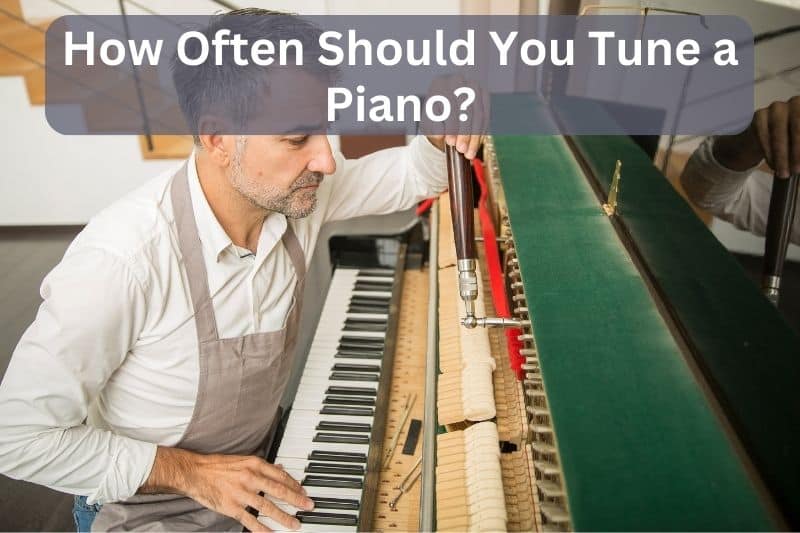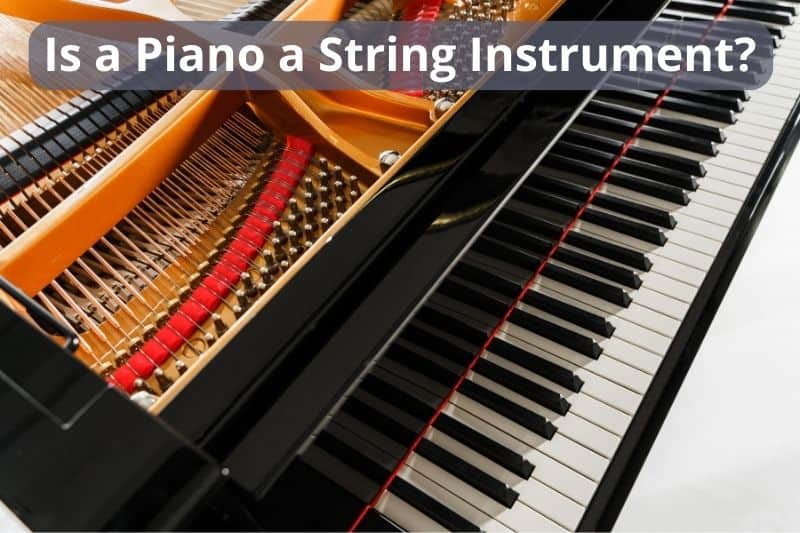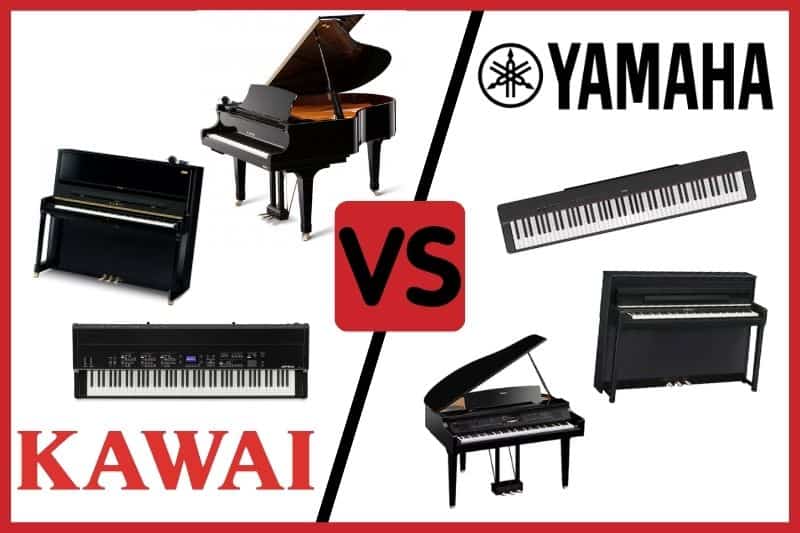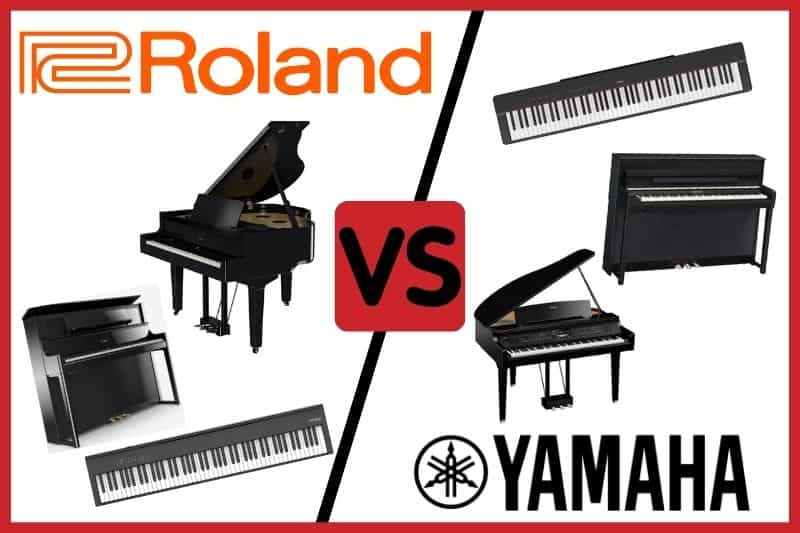Digital pianos offer plenty of attractive features and tools and learning what these are before playing can help you get off on the right foot. Polyphony is not unique to digital pianos, but you need to understand how it relates, to use it well.
Polyphony of a digital piano refers to the number of sounds it can play at the same time. This usually ranges from 64 to 256-note polyphony, and the sounds include different notes, instruments, tracks, and more. Digital pianos with higher polyphony allow more technical and intricate use.
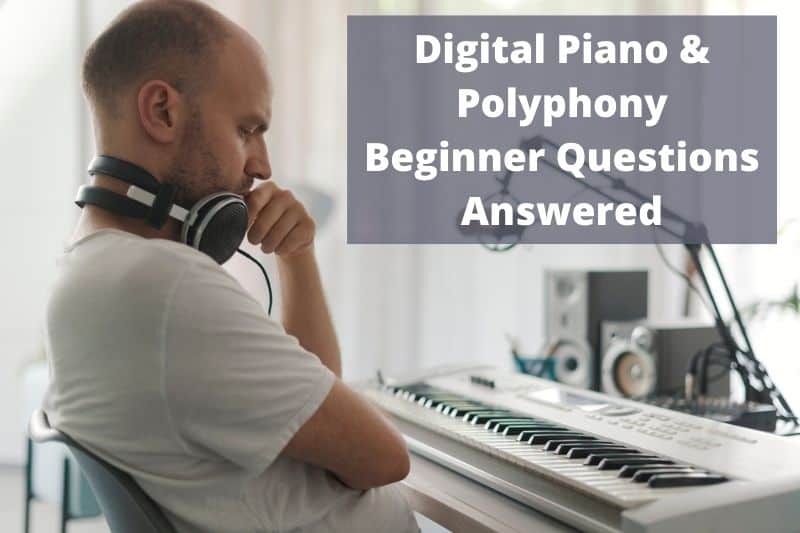
This article explains what polyphony is in relation to digital pianos. I’ll also highlight different factors that affect digital piano polyphony and how you should use this information when looking at digital pianos for use or purchase.
What is Polyphony in a Digital Piano?
Polyphony is not a term-limited to electric pianos, and you’ll see it often in your journey with music. Check out the video below for a quick explanation of how polyphony can be specific to digital pianos.
The word “polyphony” literally breaks down into “many” (poly), “noises” or “sounds” (phony). With digital pianos, the term refers to how many sounds the instrument can play at once.
This goes beyond what you can physically play at the same time. If that were the case, all keyed instruments would have a polyphony stuck at a maximum of 10 notes.
While the sustain pedal of an acoustic piano gives them a theoretically unlimited amount of maximum polyphony, digital pianos are limited by the technology they host. Your entry-level digital pianos, with limited features, might get stuck at 64-note polyphony, but most sit around 128-note polyphony. Some get as high as 256-note polyphony.
How Digital Pianos Decide Which Sounds to Cut Off
While acoustic pianos rely on the sustain pedal for polyphonic sounds, a digital piano is programmed to drop specific notes after you reach the maximum count of polyphony.
There are a few different ways for this to happen:
- Last Note Priority: the first notes played are the first to go
- First Note Priority: the first notes played remain; no new notes are played when you reach the maximum
- Highest/Lowest Note: drop the notes based on pitch
Last note priority is the most common and it’s the most intuitive approach to polyphony.
Depending on how much polyphony your digital piano allows, you may not even notice when notes start to drop out. Some programs will enable you to dictate which notes to prioritize when playing.
What Uses Up Polyphony
While an acoustic piano is limited to notes from keys, digital pianos gather sound from many places. You’ll see polyphony regarding “notes” most often, but the truth is that any number of sounds can eat up the polyphony of your piano.
Looking at the different sounds and tools that can eat it up helps explain why digital piano polyphony gets so high.
Different Voices
It’s important to recognize that digital pianos don’t just cater to an acoustic piano sound. They can play different voices, i.e., sound samples from other musical instruments, and polyphony takes all the notes from these voices into account. This can include:
- Strings
- Harpsichord
- Vibraphone
- Brass
- Etc.
If you’re playing 5 notes on both piano and strings, you’re taking 10 sounds away from your available polyphony. It gets really easy to dig into that number, even if you’re not working with sustained notes.
Metronomes
Whether a beginner or a seasoned pianist, using the metronome integrated with your digital piano is often the most straightforward and accessible. Using a metronome to monitor your tempo is one of the basics, and it’s easy to forget that it takes up some of the available voices.
Drum Backing Tracks and Accompaniments
Playing along with a drum track or other accompaniments is one of the easiest ways to run out of polyphony.
This is where some beginners run into trouble. The assumption is that you need a lower-quality instrument when starting out. However, skimping on polyphony as a beginner can actually make it harder to learn, primarily if you rely on background tracks to help you play along.
Low-polyphony digital keyboards make it more challenging to work on writing new music. If you plan on recording a few tracks to playback and then adding onto, you’ll quickly see the issue. Each layer is an entire set of notes playing simultaneously, and the more complex a piece gets and the more layers there are, the more polyphony you use.
Even drum tracks can leave you scratching your head when you notice some notes aren’t coming through.
Slow Decays
Unlike monophonic keys, which can only play single notes at a time, polyphonic keyboards have patches that allow a slow decay of notes. This allows the sound to remain and fade naturally after the key is released, creating a nice natural layering of sounds.
The belief that this only exists in specialized synth or string sounds is incorrect and can pose a problem with low polyphony digital pianos.
Duets
A second player doubles the number of fingers on the keys, and they easily double the number of sounds you need playing at once.
The actual implications of a second player depend on the complexity of their part. Still, even a small feature can run into issues.
How Polyphony Affects Performance
Polyphony affects every aspect of using your digital piano, and you should consider the implications of the limits on practice and live performances.
Practice
Digital pianos offer plenty of tools that make it easier to practice and can improve the time you dedicate, including:
- Metronome
- Drums
- Accompaniments
A digital piano with a lower polyphony limits how much you can play at the same time, and you might get stuck trying to sync with an external track or metronome. This leads to a less intuitive practice session, and it’s not an efficient use of your time.
The limits of lower polyphony pianos also put a cap on how far you can progress. You might reach a point where certain voices and parts get cut off, especially with complex passages found in classical music.
Live Performance
High polyphony allows you to do much more when performing live, such as mixing voices and introducing other elements on the fly. Stage pianos are particularly renowned for this, and having maximum polyphony helps boost your performance.
Playing on stage with low polyphony is a recipe for disaster. It allows notes to fall out from the sound, and the audience will pick up on this. Hitting the right notes doesn’t count for much if your digital piano maxes out polyphony and doesn’t let them through.
How Much Polyphony Do I Need?
The most common numbers you see associated with digital piano polyphony are:
- 64
- 128
- 192
- 256
The polyphony you need depends on the intricacy of what you intend to play. Still, generally, you want as much as you can afford. Most pianists do well with 128-note polyphony, which will be enough for reasonably complex piano pieces. However, more intricate arrangements or heavier applications need higher capabilities.
Is 64 Polyphony Enough?
It’s best to avoid digital pianos with polyphony this low, but 64 polyphony works fine if you’re starting out and that’s all you have access to.
Polyphony this low really limits what you can do, even if you have a basic skill level and you’re just getting a feel for playing the piano. You can lose out on helpful tools like backing tracks, accompaniments, and an integrated metronome.
In most cases, you should be able to find digital pianos with 128 polyphony in the same price range, so this shouldn’t be an issue.
Final Thoughts
Polyphony is a term to get used to when looking at digital pianos, and you should be aware of the limitations of any electronic keyboard you sit down at. When shopping for a digital piano of your own, make sure you choose one that suits your current experience level as well as where you want to be.
Having a higher polyphony piano can help you utilize its advanced features and help improve your playing skills. This will make your piano-playing dreams that much more attainable.
